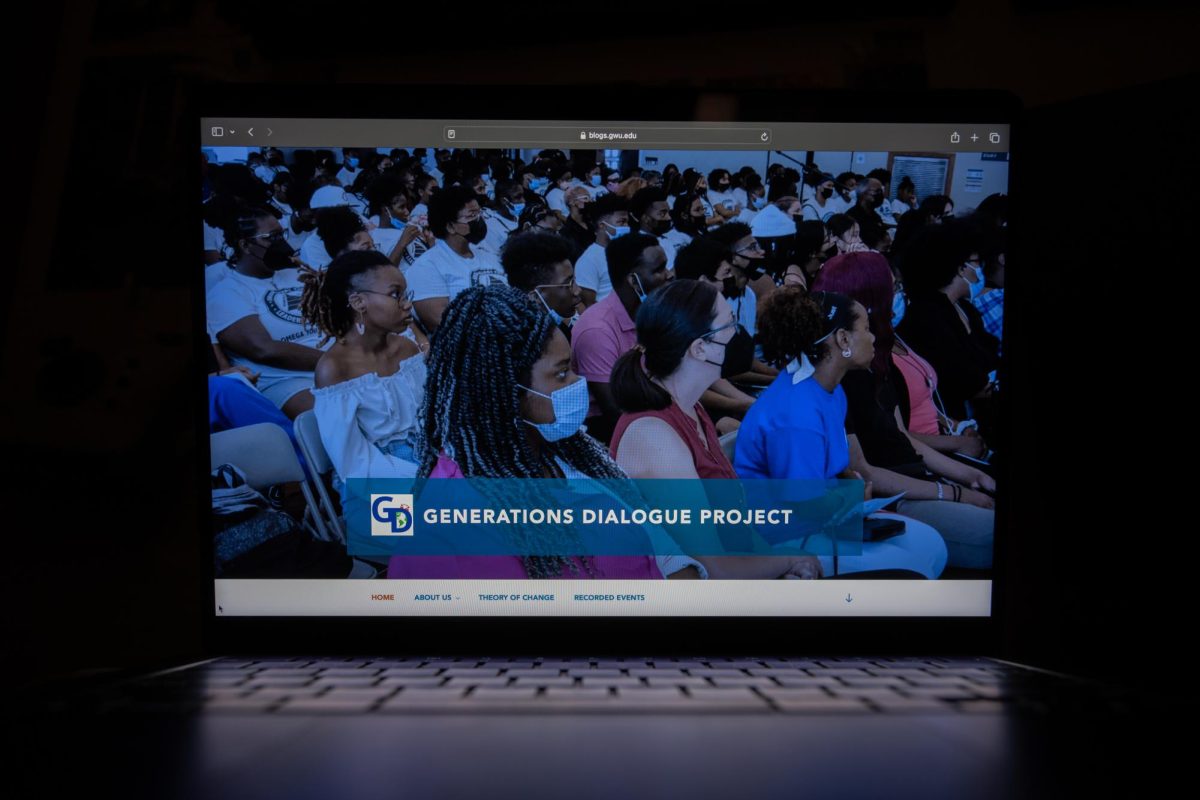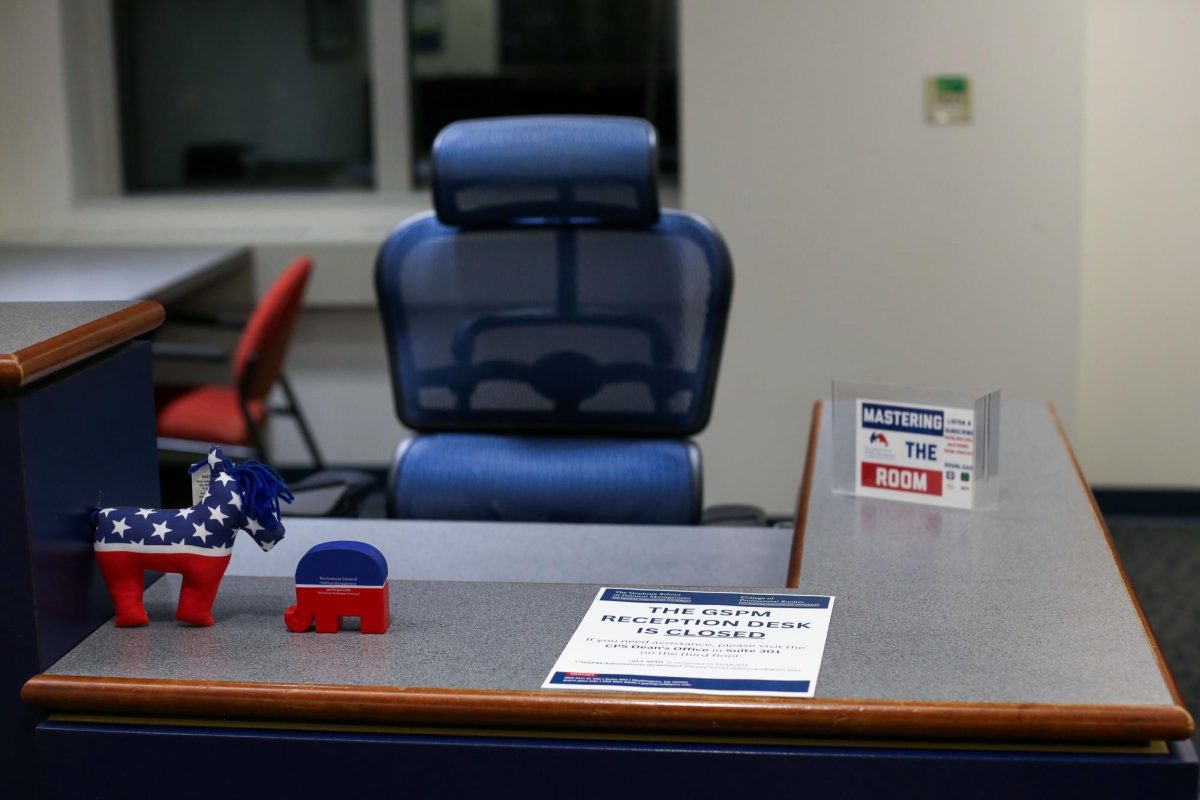Corcoran School of the Arts and Design faculty and alumni participated in an exhibition that opened last month celebrating the 20th anniversary of Transformer – a D.C. nonprofit that showcases contemporary visual art.
The Transformer20 exhibition, which is on display from Nov. 11 to Dec. 10 in the Corcoran Flagg Building’s atrium, features more than 100 works of art, like paintings, photographs and videos from more than 25 Corcoran faculty and alumni. Victoria Reis, the co-founder of Transformer, and Georgie Payne, a former Transformer staff member, curated the exhibition, which also includes a 20-year timeline of organization history and display cases filled with relics of past events, performances and exhibitions.
A group of artists founded Transformer in 2002 to connect and showcase the work of the District’s emerging marginalized artists, establishing their exhibition space in Logan Circle. The Transformer20 exhibition included the nonprofit’s annual auction, which took place Nov. 10 to raise money to “support current and future generations of artists,” as proceeds were split evenly between Transformer20 artists and the nonprofit.
Reis, the executive and artistic director of Transformer, said she designed the exhibition to showcase the accomplishments of the organization and its artists of historically marginalized backgrounds, including females, members of the LGBTQ+ community and people of color.
“My goal with this is one to celebrate all of the artists and collaborations and programming that we’ve achieved over 20 years and to also hopefully engage more people in our work and have them see both the archival documentation that we’re sharing as well as artwork from 100 different artists that have been part of our program,” Reis said.
She said Transformer has fostered a partnership with Corcoran over the past 20 years, as it has showcased the work of many Corcoran students and alums since its inception in 2002.
“It was really incredible to have an opportunity to share that within an exhibition format, and to do it here at the Corcoran – an organization and institution that we have been a longtime collaborator with and who we have featured so many alumni and students from in our program, who really in many ways have helped define our aesthetic,” she said.
Reis said she started her career at the National Association of Artists’ Organization – an organization based in D.C. that worked with and created initiatives in support of artists and art nonprofits before it was dissolved in the early 2000s. She said she soon noticed a lack of organizations aimed at providing opportunities for emerging artists in the D.C. area, inspiring her to develop Transformer through her connections to people in the D.C. visual arts and punk music scene.
“There was a big network of community for emerging musicians and bands, and I thought there really needs to be something like this for emerging visual artists,” she said.
Chandi Kelley, a Corcoran alumna and territorial assistant and coordinator of contemporary art initiatives at The Walters Art Museum in Baltimore, said she has contributed work, like her archival pigment prints, for Transformer’s annual auction for many years. She said she has made “informative” peer connections to other artists affiliated with Transformer, like her ongoing partnership with Marissa Long – another Corcoran alumna and artist featured in the exhibition.
“Transformer paired me with Marissa Long for our two-person exhibition that we did,” Kelley said. “Over the years, it’s fostered more partnerships between the two of us and more collaborations, and her work influences me a great deal. We often share our work with each other and get feedback.”
Kelley said Transformer often serves as a place for Corcoran students to showcase their work once they graduate and as they pursue their careers in the arts.
“It’s really been a steady force I think for a lot of Corcoran graduates as a place that has facilitated a lot of growth once you graduate from the programs, there’s a system that facilitates growth as you emerge as an artist,” Kelley said.
Hatnim Lee, a Corcoran alumna, photographer and multiyear veteran of Transformer auctions, said she first submitted a photograph in 2009. She said she has contributed a new photography piece to the auction every year since, including the photograph she submitted this year, which depicts a woman dressed as the Union Jack flag attending Queen Elizabeth II’s funeral.
“Transformer is one of those places that really gave people an opportunity,” Lee said. “I had my first solo exhibition there. So I’ve always been supportive of what Victoria does, and I guess it’s just become a tradition for me.” Lee said.
Cynthia Connolly, a Corcoran alumna and photographer, said she benefits from Transformer’s support even as a more established artist because it offers a reliable D.C. gallery to return to that encourages artists to create unique works of art.
“They provide this opportunity to create different things that you wouldn’t necessarily create on your own or think about whether you would be able to sell them or edit them,” Connolly said. “In that respect, they sort of think along the same lines as I do.”
Molly Springfield, a former Corcoran adjunct professor and artist, said gaining the opportunity to showcase her work in a solo show at Transformer in 2006 was a “big deal” as she started her career as a young artist. She said she encourages her students to attend exhibits and learn about the career opportunities offered at D.C. art institutions, like Transformer.
“I definitely try to tell students about the broader art world within D.C. and encourage them to go to places like Transformer,” she said. “I’ve taken students on field trips to Transformer, so that was definitely part of my teaching experience, exposing students to the kinds of things that would be available to them after they graduate.”







